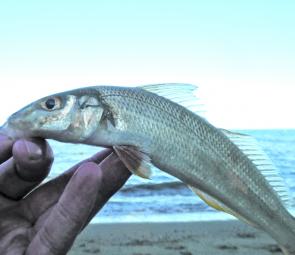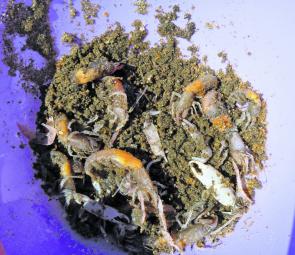Bream are firing up in the narrows, flathead are grouping in river mouths, and whiting are in exceptional numbers: what more could an angler ask for? The recent cold has provided so many opportunities for land-based and boat anglers.
Jewfish have moved up into the estuary outlets and creeks, although most of these fish are not of a ‘bragable’ size some larger specimens have been caught. Areas like the mouth of the Boyne River and South Trees are commonly targeted this time of year. The most common place to find these fish are in the mouths of rivers or outlets on a high tide between four days before and after the full moon.
To target these species a 6’6’’ to 7’ estuary rod around 3-5kg is preferred, matched with a 2500 reel loaded with 8lb braid. Drifting prawns or white bait is a fairly good method with a high success rate. If heading down the lure isle, some 3-4” flick baits in vibrant colours on a light jighead can’t go wrong when sharply hopped around on the bottom. Good soft plastics like Gulps 3” ghost shrimp, 4” shrimp and 5” jerk shad will get the jewie.
In the hardbodies range, try to source some narrow profile deep divers with vibrant patterns. The hardbodies can be worked by being twitched around the bottom digging up the sand or mud then floating up a little, the more harshly the lure is worked the more results you will get. Good hardbodies include Rapala X-Rap 8, Sebile Koolie Minnows LL and Bomber long A; all of these lures have a nice action and will land a fish or two.
Large bream have been found in the upper regions of the Fitzroy basin, especially in the narrows, and a light luring combo is best for these fish. Throwing a narrow profile lure at the snags will produce bream in good numbers. A 60mm wriggler on a light jighead will cop a hiding when worked on a slow retrieve along the bottom. Small white baits and cut up prawns (prawn cubes) cast on a light sinker to a snag will see you bag a few.
Trevally, dart and queenfish have moved onto sand flats and around pylons in the shallows of all estuaries. The most common way to target these fighters are with shallow diving and surface lures all around 50-70mm long. Flathead have started to group up around creek mouths on the flats and can be caught using the same gear and techniques as the jewfish.
Whiting can be found in numbers in the estuaries, but most are on the smaller side. When prospecting for whiting, look for little shovel marks in the sand flats and yabby beds from where they stick their nose in the ground. Small prawn cubes and bits of worm on size 12 long shanks is an effective way of nailing a few.
Crabs can still be found but in the coming months will appear less and be of less quality: large males with firm shells will be the specimens to target.
For more information on the lures or techniques to use for bream fishing (which will be the same for the trevally, queenfish and dart) jump onto YouTube and search for bream on lures. I have found the videos Fishing the edge with Michael Guest have been the most informative, but there are many more on there from ABT anglers giving plenty of guidance.
Fish light get the bite!
Reads: 1611
You can’t argue with this bream! They school up this time of year on the flats and go nuts in the narrows. This specimen was taken on a Sebile Scrankster 35 MR.

Decent-sized whiting taken on some prawn a few metres from the bank.

Looks like nippers, smells like nippers, works like dynamite!




